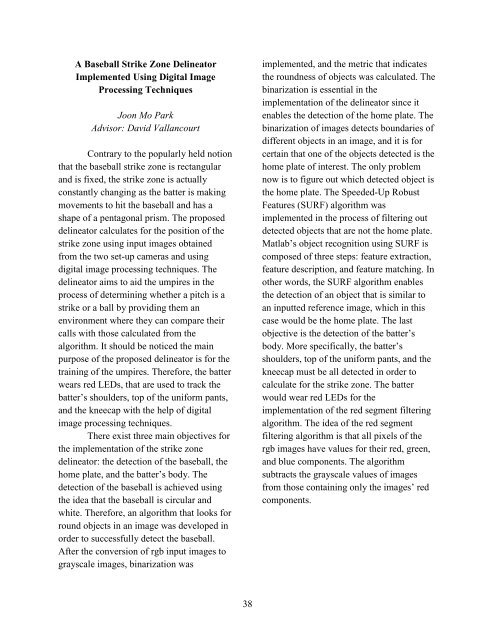Senior Design Expo 2019
The Senior Design Expo, held annually in May at Columbia University, is an opportunity for Columbia Engineering students to showcase what they have learned in their foundational math and science courses together with their engineering courses in innovative, creative, and purposeful designs and prototypes. Each year the Expo showcases more than 60 projects across all nine departments. Projects have included cutting-edge robotics, the New York City subway system, language technology, proposals for bridges to span the Hudson river, and much more.
The Senior Design Expo, held annually in May at Columbia University, is an opportunity for Columbia Engineering students to showcase what they have learned in their foundational math and science courses together with their engineering courses in innovative, creative, and purposeful designs and prototypes. Each year the Expo showcases more than 60 projects across all nine departments. Projects have included cutting-edge robotics, the New York City subway system, language technology, proposals for bridges to span the Hudson river, and much more.
Create successful ePaper yourself
Turn your PDF publications into a flip-book with our unique Google optimized e-Paper software.
A Baseball Strike Zone Delineator<br />
Implemented Using Digital Image<br />
Processing Techniques<br />
Joon Mo Park<br />
Advisor: David Vallancourt<br />
Contrary to the popularly held notion<br />
that the baseball strike zone is rectangular<br />
and is fixed, the strike zone is actually<br />
constantly changing as the batter is making<br />
movements to hit the baseball and has a<br />
shape of a pentagonal prism. The proposed<br />
delineator calculates for the position of the<br />
strike zone using input images obtained<br />
from the two set-up cameras and using<br />
digital image processing techniques. The<br />
delineator aims to aid the umpires in the<br />
process of determining whether a pitch is a<br />
strike or a ball by providing them an<br />
environment where they can compare their<br />
calls with those calculated from the<br />
algorithm. It should be noticed the main<br />
purpose of the proposed delineator is for the<br />
training of the umpires. Therefore, the batter<br />
wears red LEDs, that are used to track the<br />
batter’s shoulders, top of the uniform pants,<br />
and the kneecap with the help of digital<br />
image processing techniques.<br />
There exist three main objectives for<br />
the implementation of the strike zone<br />
delineator: the detection of the baseball, the<br />
home plate, and the batter’s body. The<br />
detection of the baseball is achieved using<br />
the idea that the baseball is circular and<br />
white. Therefore, an algorithm that looks for<br />
round objects in an image was developed in<br />
order to successfully detect the baseball.<br />
After the conversion of rgb input images to<br />
grayscale images, binarization was<br />
implemented, and the metric that indicates<br />
the roundness of objects was calculated. The<br />
binarization is essential in the<br />
implementation of the delineator since it<br />
enables the detection of the home plate. The<br />
binarization of images detects boundaries of<br />
different objects in an image, and it is for<br />
certain that one of the objects detected is the<br />
home plate of interest. The only problem<br />
now is to figure out which detected object is<br />
the home plate. The Speeded-Up Robust<br />
Features (SURF) algorithm was<br />
implemented in the process of filtering out<br />
detected objects that are not the home plate.<br />
Matlab’s object recognition using SURF is<br />
composed of three steps: feature extraction,<br />
feature description, and feature matching. In<br />
other words, the SURF algorithm enables<br />
the detection of an object that is similar to<br />
an inputted reference image, which in this<br />
case would be the home plate. The last<br />
objective is the detection of the batter’s<br />
body. More specifically, the batter’s<br />
shoulders, top of the uniform pants, and the<br />
kneecap must be all detected in order to<br />
calculate for the strike zone. The batter<br />
would wear red LEDs for the<br />
implementation of the red segment filtering<br />
algorithm. The idea of the red segment<br />
filtering algorithm is that all pixels of the<br />
rgb images have values for their red, green,<br />
and blue components. The algorithm<br />
subtracts the grayscale values of images<br />
from those containing only the images’ red<br />
components.<br />
38








